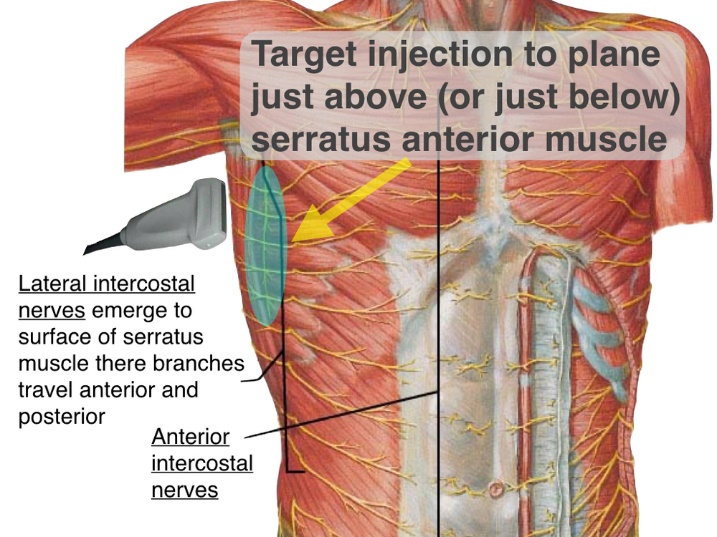Femoral Nerve Block
The femoral nerve block is an injection of numbing medication and steroid in the region of the major nerve that supplies the upper leg, anterior thigh, femur (the bone of the thigh), and knee. Sometimes, ultrasounds are used to locate the nerve. It can be used to diagnose the location of the pain as well as provide pain relief
The reasons to do this nerve block is to stop pain in the following areas:
- Femur fracture
- Patella (knee-cap)
- Quadriceps tendon
- Knee surgery
- Analgesia for hip fracture/surgery

Popliteal Nerve Block
A popliteal nerve block is performed for pain control perioperatively or postoperatively below the patella, the lower two thirds of the lower extremity like the ankle or foot but works well for the calf and Achilles tendon. The popliteal region is the area behind the knee or the knee crease. This is where the sciatic nerve divides into the tibial nerve and the common perineal nerve. A popliteal block in conjunction with an ankle block provides significantly better pain relief than does an ankle block alone for foot surgery.

Erector Spinae Nerve Block
It is a novel paraspinal block in between the fascia of the muscles which was initially utilized as a regional technique for thoracic neuropathic pain. Local anesthetic is deposited under ultrasound guidance deep to the three columns of erector spinae muscles which run the length of the spine from the base of the skull to the medial crest of the sacrum. It is performed for chest wall, spine, and rib fractures.

Serratus Anterior Nerve Block
The ultrasound-guided serratus anterior plane block (SAPB) is a promising single-injection method to anesthetize the chest wall in patients with multiple rib fractures and is injected in the fascial plane between the latissimus dorsi muscle and the serratus anterior muscle.
It blocks thoracic intercostal nerves (Nerves between the ribs) and other conditions such as:
- Breast surgeries- mainly wide local excisions
- Axillary clearance/sentinel node biopsy.
- Breast reconstruction surgery (Lattisimus dorsi flap)
- AV fistula surgery
- Rib fractures.
- Esophagectomy and anastomosis.
- Thoracoscopy/ Thoracotomy.
- Shoulder surgery (involving armpit)

Transverse Abdominis Nerve Block
The transverse abdominis plane (TAP) block is a peripheral nerve block designed to anesthetize the nerves supplying the anterior abdominal wall (T6 to L1). It is used in a variety of procedures that require anesthesia and better pain control. It is used as an adjunct for postoperative pain control in abdominal, gynecologic, or urologic surgery involving the Thoracic 6 to Lumbar 1 nerve distribution. Surgical procedures include large bowel resection, cesarean section, abdominal hysterectomy, open appendectomy, and laparoscopic cholecystectomy. The TAP block has also found usefulness in procedures such as abdominal and inguinal hernia repair, prostate, kidney surgeries, and many different laparoscopic procedures in general.

Lumbar Sympathetic Nerve Block
A lumbar nerve block, also known as a lumbar sympathetic block, is a treatment commonly used to stop pain from cancer, spinal problems, neurological disorders and shingles, or herpes zoster affecting the lower extremities.
In general, a sympathetic nerve block can be used to diagnose or treat pain involving the nerves of the sympathetic nervous system.
Examples of conditions for which a sympathetic nerve block might be used include:
- Pain from spasms in the blood vessels
- Complex regional pain syndrome, previously called reflex sympathetic dystrophy and causalgia
- Raynaud’s syndrome
- Some types of chronic stomach pain
- Excessive sweating
